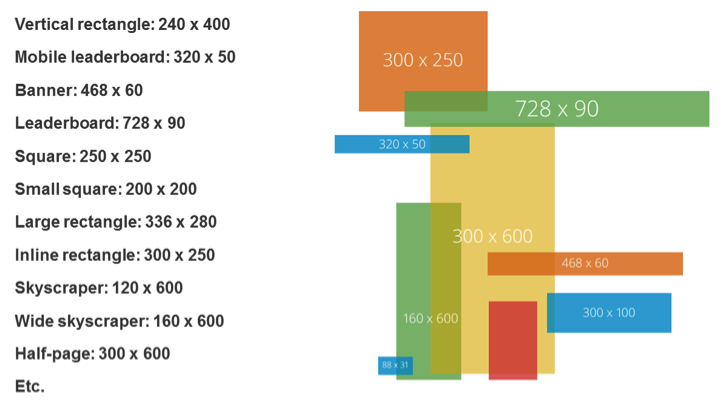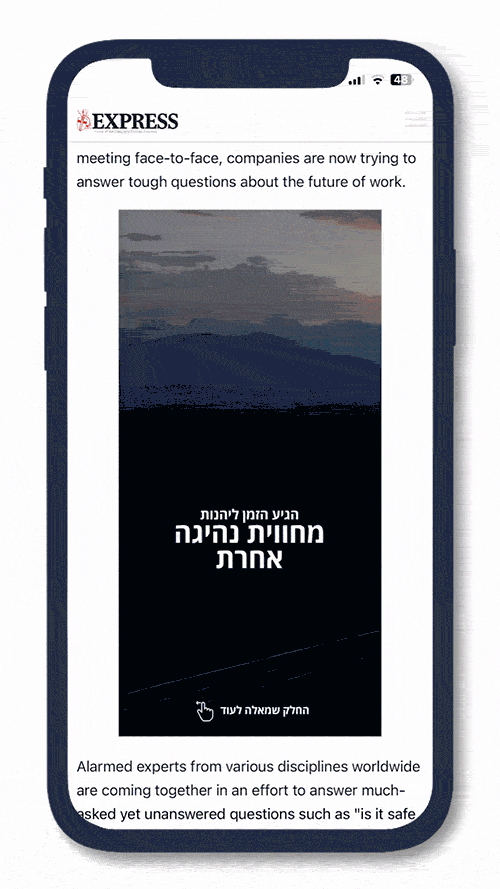Native Ads vs. Display Ads: What are the Differences?

A comparison of native ads vs display ads has to start at the very beginning. So let’s go back to the 90s!
1994, to be exact. In internet years, it might as well be ancient history. It was, in fact, the year that the first display ad was published. A banner ad, produced for AT&T by McCambley, and it looked like this:

According to Mashable, the first-ever online ad didn’t feature the logo of the advertiser. This is because AT&T hadn’t yet completely signed off by publication time. It’s ironic, though, that the first display ad actually had something in common with what would become the native ad of the future. It wasn’t instantly obvious who the advertiser was, nor was it visually associated with the advertiser’s brand.
Battle of the Ads – Native Overtakes Advertising Market Share
Display ads have been around for nearly 30 years. Yet, the term ‘native advertising’ was only coined in 2011. Even so, in the past few years, native ads vs display ads have put up some tough competition, unseating the original banner ads as the leader in online advertising. According to this study, native ads are viewed 52% more than display ads. They also contribute to much higher ‘brand lift’ than display ads. Native advertising spend is skyrocketing, with $85 billion spent globally in 2021, and a forecast of nearly $190 billion spend in 2028.
To understand why native ads vs display ads wins, let’s take a closer look at both types and the differences between them.
What are Display Ads?
Simply put, display ads, or popularly called Google ads, are ads that appear in the online space. The first display ads were ‘banner ads’, hyperlinked, image-based ads shaped as a strip, and usually located at the top of a web page. Later, as web design became more complex and creative, display ads evolved to a range of shapes and sizes, and included videos, interactive elements, pop-up functions, and more. Today, banner ads simply refer to a specific size, of 468 x 60 pixels.
Display ads typically have low click-through rates – just 0.05% across all formats and platforms. However, while CTR is important, it’s not everything. When other metrics are considered, display ads do impact brand awareness and intent to purchase. Even with the problem of ‘banner blindness’, display ads work. That’s why performance marketers use display ads as an important part of their online strategy, particularly in retargeting campaigns.
Display ad sizes: A visual discovery

What are Native Ads?
Native ads are ads that appear as part of the design and flow of the web page they are located on. Rather than standing out as an obvious hard-selling ad, native ads tend to have an editorial look and feel, with a softer selling approach. Native ads commonly appear as sponsored posts on premium publisher sites on the open internet, as with Outbrain, on social media news feeds, and as listings in search results on search engines such as Google or Bing.
In recent years, standard native ads have expanded to support a wide range of formats and experiences to engage audiences, including native video ads, clip ads, app install ads, and more.

What Do Native Ads Look Like?
Although native advertising is not as old as Google ads, it’s got a stronghold on the digital ad industry. Native ads are highly engaging, and eminently suited to mobile, with a click through rate of up to 0.38% for premium native ads viewed on a smartphone. On desktop, the average CTR is 0.16% – half that of mobile, but way more than display ads.
The Differences Between Display Ads & Native Ads
Native ads vs display ads, in a head-to-head comparison:
| Native ads | Display Ads |
| Has the look and feel of the page’s editorial content | Stand out as a paid ad |
| Soft Sell | Hard sell |
| High CTR (average 0.2%) | Low CTR (average 0.05%) |
| Ideal for driving traffic to your website | Ideal for retargeting campaigns |
| Campaigns on common websites generate lower-quality traffic | Campaigns on common websites generate lower quality traffic |
| More expensive cost per click | Cheaper cost per click |
| More effective on mobile | More effective on desktop |
Native, Display, or a Bit of Both?
In an ad-saturated world, only 10% of people say that don’t find digital ads annoying. At last count, there were over 760 million downloads of ad-blocking software worldwide. Among these depressing numbers, native advertising has carved a comfortable, and less obtrusive, niche. In fact, with the continued growth of programmatic native advertising, native ads are now overtaking display ads. But that doesn’t mean display ads are on the way out. Hardly. In 2022, display ad spend in the US reached $63.5 billion, up from $56.7 billion in 2021.
The future of native ads vs display ads is yet unknown, but in the meantime, many performance marketers are hedging their bets, using their budgets to leverage the advantages and strengths of both display and native advertising in their online strategy.












